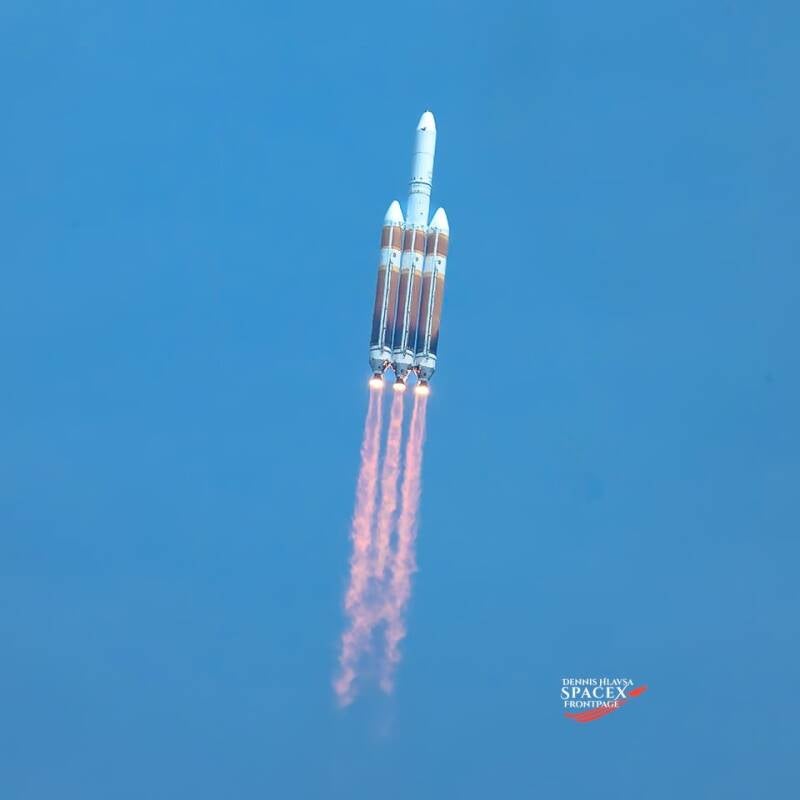
Image credit Jerry Pike
The US space force and a joint venture between Boeing and Lockheed Martin on Tuesday sent a secret reconnaissance payload into orbit using ULA's Delta IV Heavy rocket. This launch marks the final flight for this renowned launch vehicle, which has served for decades, tallying nearly 400 missions since its inception in 1960. The rocket, managed by United Launch Alliance (ULA), lifted off from Cape Canaveral Space Force Station in Florida at approximately 1pm EDT (1700 GMT). This launch comes after a 12-day delay due to a technical issue encountered during a previous attempt. Standing at approximately 23 stories tall, the Delta IV Heavy ascended into the sky amidst partly cloudy conditions, as seen in a live webcast by ULA. During Tuesday's flight, key stages separated as planned, culminating in the jettisoning of cargo panels protecting the NROL-70 payload. The mission aimed to deploy a satellite for the National Reconnaissance Office (NRO), a classified operation known as NROL-70. Hours later, the Space Force confirmed the successful placement of the payload into orbit.
The Rocket: Delta IV Heavy
The Delta IV Heavy stands as a colossus among rockets, renowned for its immense power and reliability. With this mission, it will have completed 16 successful launches, each contributing to the United States' strategic reconnaissance efforts.
Its design is a marvel of engineering, featuring three common booster cores and a cryogenic second stage, all powered by liquid hydrogen and liquid oxygen. The payload fairing, a metallic trisector, ensures the spacecraft's protection during ascent.
United Launch Alliance’s Delta IV Heavy is a heavy-lift launch vehicle, the largest type of the Delta IV family and one of the world’s most powerful rockets. The Delta IV Heavy configuration is comprised of a common booster core (CBC), a cryogenic upper stage and a 5-meter diameter payload fairing (PLF). The Delta IV Heavy employs two additional CBCs as liquid rocket boosters to augment the first-stage CBC. The Delta IV Heavy can lift 28,370 kg (62,540 lbs) to low Earth orbit and 13,810 kg (30,440 lbs) to geostationary transfer orbit. It is an all liquid-fueled rocket, consisting of an upper stage, one main booster and two strap-on boosters.
The Delta IV was created to fulfill the requirements of the United States Air Force’s Evolved Expendable Launch Vehicle (EELV) program. The inaugural launch of the Delta IV occurred in 2002. NROL-70 is the last ever launch of ULA’s Delta IV of either medium or heavy variants. NROL-70 builds upon a long legacy of NRO Delta IV Heavy launches at Cape Canaveral dating back to 2009.
The PLF (Payload Fairing) encapsulates the spacecraft to protect it from the launch environment on ascent. The 19.8m (63-ft) long PLF makes the vehicle’s height approximately 71.5 m (235 ft).
The DCSS (Delta Cryogenic Second Stage) is a cryogenic liquid hydrogen/liquid oxygen fueled vehicle, with a single RL10C-2-1 engine that produces 110.1 kilo-Newtons (24,750 lbs) of thrust.
The Delta IV booster propulsion is provided by three liquid hydrogen and liquid oxygen-burning RS-68A engines. Each RS-68A engine produces 312.3 kilo-Newtons (705,250 lbs) of thrust for a combined total liftoff thrust of more than 2.1 million pounds.
Some of the notable achievements of the Delta rockets include launching the world's first weather and GPS satellites, as well as numerous important NASA missions, such as sending spacecraft to Mars. Among these missions were the much celebrated launches of the Mars rovers Spirit and Opportunity in 2003 and the Parker Solar Probe in 2018.
Tony Bruno, the president and CEO of ULA, emphasised the pivotal role of the Delta rocket saying, "The Delta rocket played a pivotal role in the evolution of space flight since the 1960s."
Moving forward, ULA plans to retire the Delta and Atlas rockets in favor of its newly developed Vulcan rocket. The Atlas V, another ULA rocket, still had 17 missions scheduled before its planned retirement. Despite a recent setback where the payload malfunctioned before reaching the moon, the Vulcan rocket showcased a successful inaugural flight earlier this year.

image credit Dennis Hlavsa for SpaceXFrontpage


Add comment
Comments